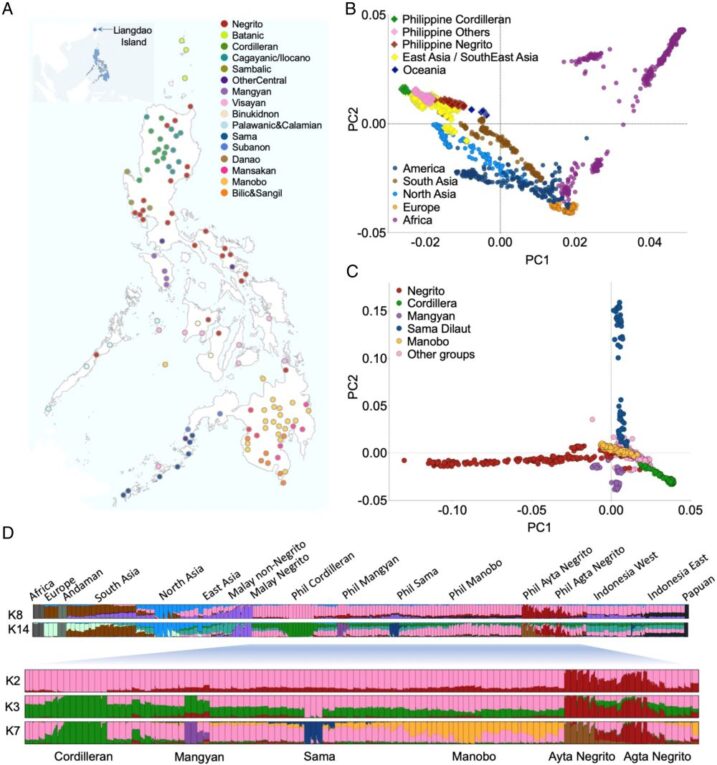
An article in PNAS described as the largest and most comprehensive DNA-mapping study of the Philippines, by Larena et al. (2021) offers insights to understand human history in Island Southeast Asia.
Significance
A key link to understanding human history in Island Southeast Asia is the Philippine archipelago and its poorly investigated genetic diversity. We analyzed the most comprehensive population-genomic data for the Philippines: 1,028 individuals covering 115 indigenous communities. We demonstrate that the Philippines were populated by at least five waves of human migration. The Cordillerans migrated into the Philippines before the arrival of rice agriculture, where some remain as the least admixed East Asians carrying an ancestry shared by all Austronesian-speaking populations, thereby challenging an exclusive out-of-Taiwan model of joint farming–language–people dispersal. Altogether, our findings portray the Philippines as a crucial gateway with a multilayered history that ultimately changed the genetic landscape of the Asia-Pacific region.

